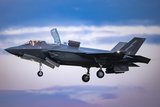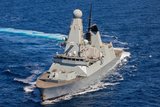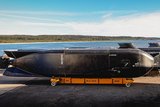How the USS Gerald R Ford's new tech is proving the critics wrong
The USS Gerald R Ford anchored in the Solent off Portsmouth on 17 November. (Photo: author)
Despite past criticism from the Pentagon's top weapons tester, the new technologies integrated into the USN's latest aircraft carrier have shown value during its first operational deployment.
USS Gerald R Ford (CVN 78) integrates 23 new technologies, highlights of which include the ship's Electromagnetic Aircraft Launch System (EMALS), Advanced Arresting Gear (AAG) and Advanced Weapons Elevators (AWEs).
In January, the latest annual report from the DoD's weapons testing authority said the EMALS, arrestor gear, weapons elevators and dual-band radar were not hitting reliability targets.
The Director Operational Test & Evaluation (DOT&E) report highlighted the 'low reliability' of
Already have an account? Log in
Want to keep reading this article?
More from Naval Warfare
-
![US Coast Guard prepares procurement of next-gen surface search radar]()
US Coast Guard prepares procurement of next-gen surface search radar
The NXSSR will replace five in-service capabilities and be the US Coast Guard’s primary collision avoidance system.
-
![MBDA-led DragonFire’s latest trials move the LDEW system closer to UK Navy integration]()
MBDA-led DragonFire’s latest trials move the LDEW system closer to UK Navy integration
The DragonFire lines up with other European laser-directed energy weapons being developed in collaboration with MBDA.
-
![US Coast Guard pursues solutions to increase maritime domain dominance]()
US Coast Guard pursues solutions to increase maritime domain dominance
The USCG is seeking technologies, services and applications to better connect its assets and speed up the decision-making process.
-
![Canadian Coast Guard’s OOSV delivery is “major milestone” in fleet modernisation]()
Canadian Coast Guard’s OOSV delivery is “major milestone” in fleet modernisation
The Polar Class 6 platform is the largest CCG science-dedicated vessel and will operate on the country’s east coast.
-
![How the Anduril-HHI autonomous ship plan fits in with the US Navy’s MASC programme]()
How the Anduril-HHI autonomous ship plan fits in with the US Navy’s MASC programme
The new modular vessel is expected to be developed for both commercial and defence use, with a heavy focus on production speed and mission flexibility.























